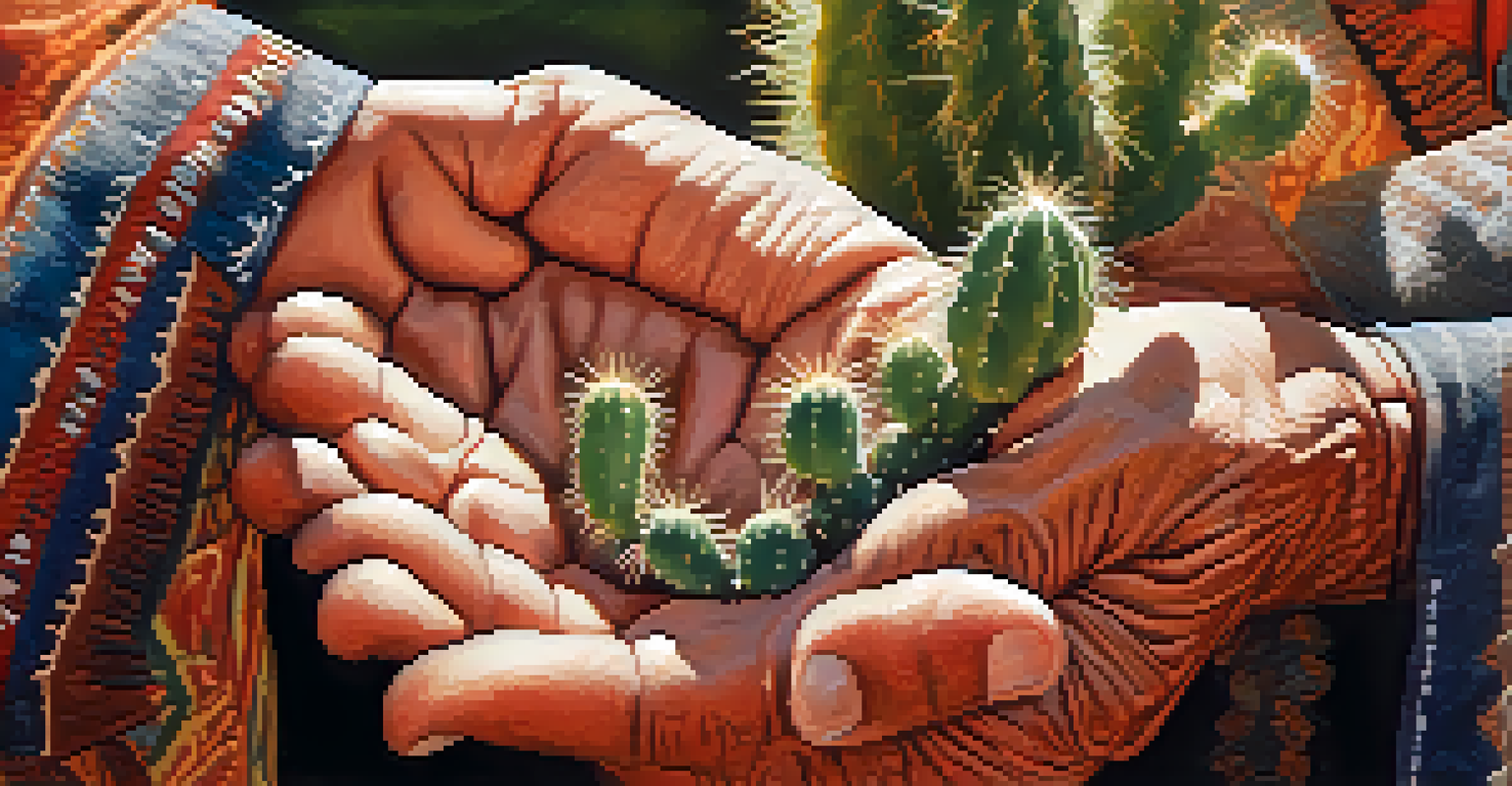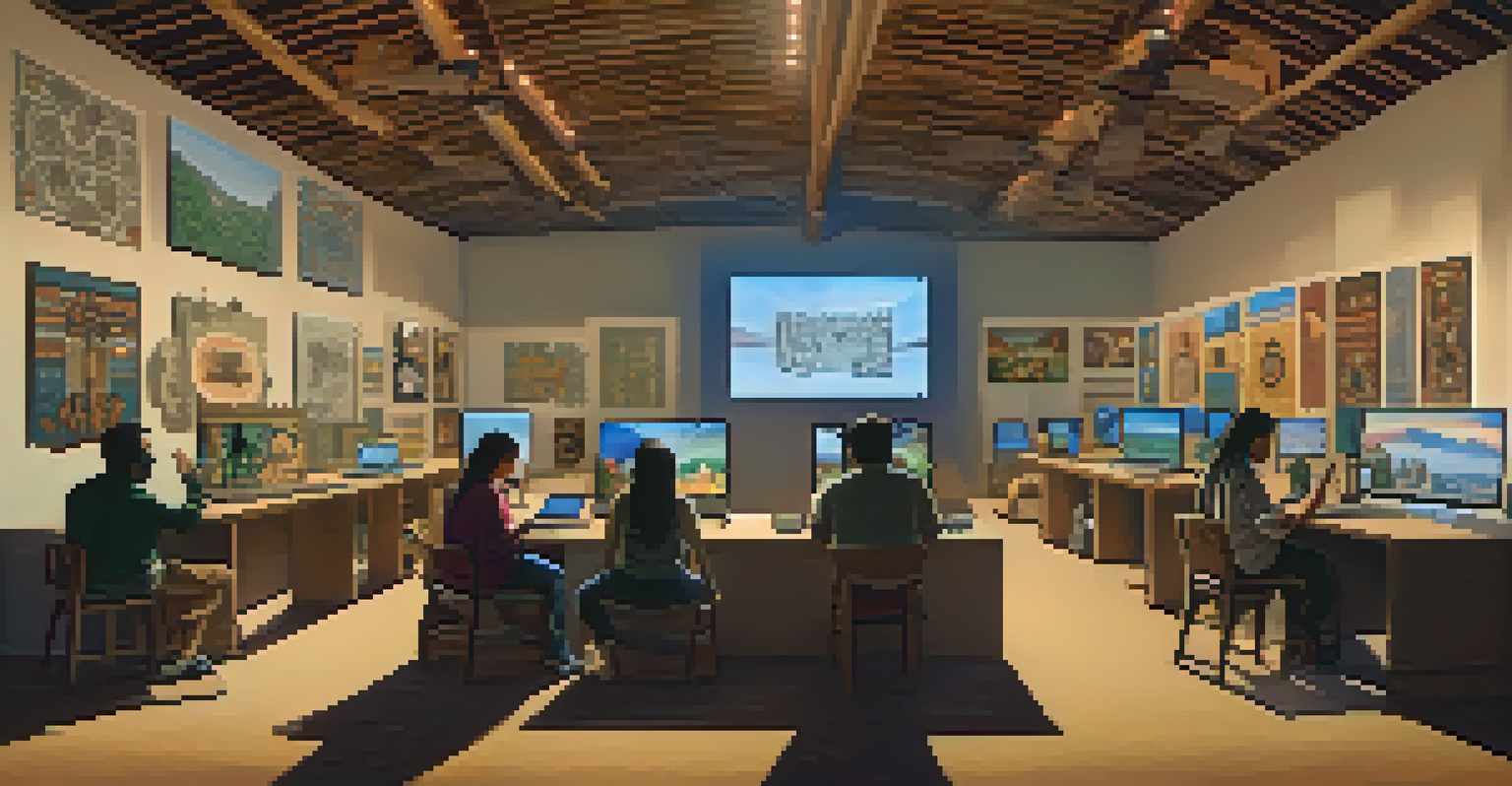Contemporary Challenges in Peyote Knowledge Transmission

Understanding Peyote's Cultural Significance Today
Peyote, a cactus revered by many Indigenous cultures, holds deep spiritual significance. It is primarily used in ceremonial contexts, particularly within the Native American Church. Understanding its cultural importance is crucial for appreciating the knowledge surrounding its use, which has been passed down through generations.
The preservation of indigenous knowledge is critical to the survival of cultures, and technology can be a powerful ally in this endeavor.
However, as modernization encroaches upon traditional practices, the challenge arises in maintaining this sacred knowledge. Young people often struggle to connect with the rituals and teachings of their ancestors, leading to a potential loss of cultural heritage. This disconnection can diminish the spiritual and communal bonds that Peyote fosters.
Moreover, the commercialization of Peyote can further complicate its cultural transmission. When used outside of its traditional context, there is a risk that its significance is diluted, leading to misunderstandings about its role in Indigenous spirituality.
Legal Challenges Impacting Peyote Access
Legal frameworks surrounding Peyote use are often restrictive, affecting access for Indigenous communities. In the United States, while the Religious Freedom Restoration Act allows for its use in specific contexts, complexities arise when it comes to harvesting and distributing the cactus. This can hinder traditional practices and ceremonies.

Additionally, the illegal status of Peyote in many regions poses a significant barrier to knowledge transmission. When access is limited, the opportunity for elders to teach younger generations diminishes, impacting the continuity of cultural practices. This legal bottleneck can create feelings of frustration and helplessness within communities.
Cultural Significance of Peyote
Peyote holds deep spiritual importance for Indigenous cultures, but modernization threatens the transmission of its traditional practices.
As the demand for Peyote grows outside of traditional uses, the legal landscape must adapt. Advocating for policy changes that respect Indigenous rights and practices is essential for preserving this vital knowledge and ensuring that future generations can learn from it.
The Role of Elders in Knowledge Transmission
Elders play a pivotal role in transmitting Peyote knowledge, serving as custodians of tradition. They share not only the practical aspects of Peyote use but also the stories, songs, and teachings that enrich its cultural context. Their wisdom is invaluable in guiding younger members of the community.
Elders are the keepers of the stories and the traditions that define our communities. Their wisdom is a treasure that must be passed down.
However, the declining number of elders capable of passing down this knowledge poses a significant challenge. As time progresses, many of these guardians of tradition are aging, and there are fewer opportunities for mentorship. This generational gap can lead to a disconnect between the past and present.
Efforts to document and preserve this knowledge through digital means can be beneficial. By capturing the teachings of elders, communities can create resources that ensure the survival of Peyote knowledge, even as the need for face-to-face transmission diminishes.
The Impact of Globalization on Peyote Practices
Globalization has introduced various influences that can alter traditional Peyote practices. As cultures intermingle, there is potential for both enrichment and dilution of spiritual practices. While exposure to different ideas can foster understanding, it can also lead to misinterpretations of Peyote's significance.
Younger generations may be drawn to contemporary spiritual practices that prioritize personal experience over communal traditions. This shift can create tensions within communities as traditionalists seek to uphold age-old practices amidst changing attitudes. Balancing modern influences with traditional teachings is a delicate dance.
Legal Barriers to Peyote Access
Restrictive legal frameworks hinder Indigenous communities' access to Peyote, impacting the continuity of their cultural practices.
Communities are now faced with the task of integrating modernity while preserving the core values associated with Peyote. Finding ways to celebrate and adapt traditional practices in a way that resonates with younger members is crucial for the survival of these teachings.
Education and Awareness: Bridging the Knowledge Gap
Education plays a crucial role in bridging the gap in Peyote knowledge transmission. By fostering awareness about the cultural significance and traditional uses of Peyote, communities can cultivate a deeper appreciation for its role in Indigenous spirituality. Initiatives aimed at educating both Indigenous and non-Indigenous people can help preserve this knowledge.
Workshops, storytelling sessions, and community gatherings can provide platforms for sharing experiences and teachings related to Peyote. These spaces encourage dialogue and understanding, allowing younger generations to connect with their heritage while educating outsiders about its importance.
Furthermore, collaboration with educational institutions can facilitate the inclusion of Indigenous knowledge systems in curricula. This not only honors traditional teachings but also enriches broader educational contexts, fostering respect and understanding across cultures.
Technology's Role in Preserving Peyote Knowledge
In our digital age, technology offers innovative ways to preserve and share Peyote knowledge. Online platforms can serve as repositories for teachings, stories, and rituals related to Peyote, ensuring that they remain accessible to future generations. This digital archiving can be a lifeline for communities facing the risk of knowledge loss.
Social media also enables communities to connect and share experiences, creating a sense of belonging among younger members. Through these platforms, individuals can engage with their cultural heritage and learn from others who share similar experiences. This exchange can foster a renewed interest in traditional practices.
Technology in Knowledge Preservation
While technology can aid in preserving Peyote knowledge, it must be approached carefully to avoid misrepresentation and appropriation.
However, it's essential to approach technology with caution. While it can enhance knowledge transmission, there’s a risk of misrepresentation and appropriation. Communities must navigate these challenges thoughtfully, ensuring that the use of technology aligns with their cultural values and intentions.
Future Directions for Peyote Knowledge Transmission
Looking ahead, the future of Peyote knowledge transmission hinges on collaboration and adaptability. Communities must come together to explore innovative strategies for teaching and preserving their traditions amidst contemporary challenges. This may involve redefining how knowledge is shared while honoring the core values of their practices.
Engaging younger community members in leadership roles can also foster a sense of ownership over their cultural heritage. By encouraging them to participate actively in knowledge transmission, communities can cultivate a deeper connection to their traditions. This empowerment is vital for sustaining cultural practices.

Ultimately, the journey of Peyote knowledge transmission is one of resilience. By embracing both tradition and innovation, communities can navigate the complexities of modern life while ensuring that their sacred teachings endure for future generations.